I Am a MAGA Republican, and Donald Trump is My Weapon
At a national level there is a unique policy priority that almost every politician, on both sides, will avoid discussing. At a national level a single policy priority determines all other national policy outlooks. That policy is the national economic policy.
The national economic policy of a presidential candidate determines all other national policies that flow from the presidential candidate. The national economic policy impacts the obvious policies like energy and trade, and also determines the lesser obvious policies like regulation and even foreign policy.
It is specifically because a candidate’s national economic outlook impacts all other issues, that most national politicians never talk about it.
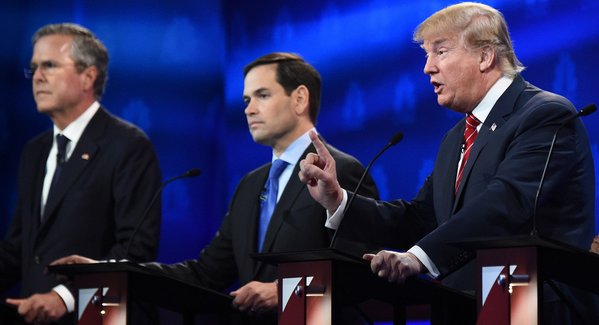
It would be impossible to support Main Street USA, a popular talking point, and still support the Paris climate treaty, the transpacific trade partnership (TPP) or the transatlantic trade and investment partnership (TTIP).
To avoid the contradictions most democrat and republican politicians avoid discussing their national economic policy. It is an unspoken rule within the billionaire club and donor game, an economic code of omerta amid most political candidates.
President Trump broke the rule and even went so far as to campaign on an America-First economic policy agenda. That core outlook forms the Make America Great Again foundation. MAGA is based on a national economic policy outlook that determines every other national policy as carried by President Trump.
While most Americans may not be able to articulate how the national economic policy impacts them, almost every American feels the consequences through gasoline prices, energy prices, employment, wage rates and the expenses within their everyday lives. To try and hide this reality, often media and economic analysts will say the U.S. President has no control over gasoline prices; however, this is unequivocally false.
Yes, it is true that oil prices are determined by the global market for the product, the supply and the demand. However, the energy policy of the president determines the domestic investment in natural resource development and extraction by oil companies. The energy policy determines domestic supply. The regulatory policy determines the expansion, or lack therein, of oil and gasoline refinery capacity. So yes, it is ultimately the U.S President who determines gasoline prices indirectly through energy and regulatory policy.
If this were not the case, then gasoline would cost nearly the same in almost every nation. It doesn’t. Right now, gasoline in Mexico is almost $1 less than gasoline in the United States, specifically because Mexican President Andres Manuel Lopez-Obrador is not trying to reduce oil resource investment, development and/or gasoline refinery capacity.
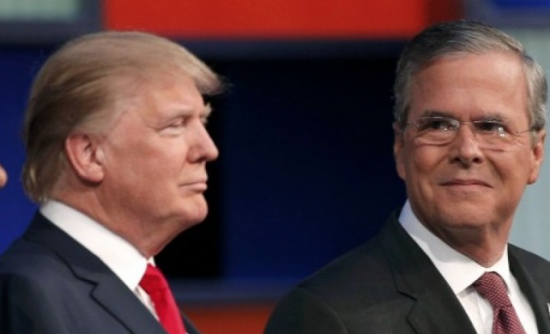 President Trump was the first presidential candidate who campaigned on a domestic national economic policy. He even went one step further and stated the T-word, tariffs. Yes, the commerce department holds tools to support a national economic policy.
President Trump was the first presidential candidate who campaigned on a domestic national economic policy. He even went one step further and stated the T-word, tariffs. Yes, the commerce department holds tools to support a national economic policy.
The tariff tool is another aspect to national economics that most politicians avoid discussing because the toolbox is counter to the interests of Wall Street, multinational corporations and hedge fund managers.
For a reference point you might remember the apoplectic fits from financial and economic punditry to President Trump’s 2017 and 2018 steel and aluminum tariffs.
Economic security is determined by national economic policy. National security is also an outcome of national economic policy. Again, President Trump was also the first modern president to put that outlook to work when he said, “economic security is national security,” and then began constructing a foreign policy agenda using the cornerstone of national economic policy. The result was quite remarkable and led to what eventually became the Trump Doctrine.
It was inherently the US national economic policy that underpinned President Trump challenging NATO to meet their financial obligations. It was national economic policy that drove trade policy and created the north American USMCA trade agreement. It was national economic policy that led to countervailing duties on Chinese and European imports. Which had the remarkable effect of actually lowering prices inside the United States.
We began importing deflation through lower priced goods as the value of the dollar increased and China/EU central banks devalued their currency to avoid the impact of tariffs. Asia and the EU also subsidized their export manufacturing with incentives in order to lower costs as an offset to the tariffs, while simultaneously Asian and European companies began investing in production facilities inside the U.S. as a long-term approach to retaining access to the U.S. market. To put it succinctly, this was MAGAnomics at work.
U.S. wages increased, U.S. job growth increased, U.S. energy prices dropped with increased energy development and a massive cut in regulations, and that in turn lowered the cost of domestic goods. Suddenly we were importing goods at lower prices and generating goods internally at lower prices. More MAGAnomic outcomes, which, not coincidentally, was the exact opposite of all Wall Street claims and predictions.
Making America Great Again, was an outcome of national economic policy. At its core, MAGA is a national economic dynamic within a political movement that is represented by President Donald J Trump.
It is critical to understand, the MAGA economic policy is essentially a national policy completely, and uniquely, under the control of the office of the President. The impact to the lives of Americans is a direct outcome from national economic policy. If a president wants to lead an independently wealthy country, he/she applies a very specific economic outlook to all other policy areas including energy, regulation and foreign policy.
It is also true that opposition to President Donald Trump is uniquely connected to the America-First economic agenda.
Multimillion-dollar lobbyist firms like the U.S. Chamber of Commerce and the Business Roundtable, along with dozens of economically established SuperPAC’s funded by Wall Street and multinational corporations, are vehemently opposed to the America-First economic agenda.
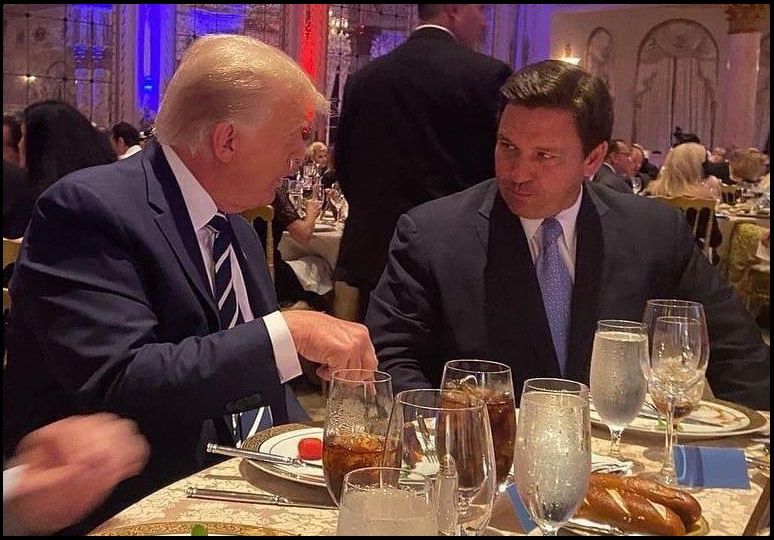 All of the national politicians and political candidates taking money from these aforementioned groups necessarily bind themselves to a position that stands against the America-First economic agenda.
All of the national politicians and political candidates taking money from these aforementioned groups necessarily bind themselves to a position that stands against the America-First economic agenda.
In essence, if you take money from the multinationals you cannot deliver on MAGA economic outcomes for banking, trade, finance etc. And that’s exactly where we run into the problem.
Because MAGA national economic priorities conflict with the multinational corporations, hedge funds and the Wall Street donor class, all of the politicians who accept the influence checks from these self-interested groups cannot run on, or deliver, a MAGA national economic agenda.
At a local, county and state level you have direct impact on the political policy agenda in your community. Who you elect to the city council, school board, state house and senate as well as governor’s office has an impact on those local and state priorities. However, national economic policy, national energy and trade policy and national foreign policy are not under your control.
As a result, the same skillset, or policy outlook, that makes a governor a successful state politician doesn’t carry into a federal office, [see the example of Wisconsin Governor Scott Walker]. Yes, there are some executive and administration skills that carry over; however, on the bigger issue of steering the national policy agenda, almost every candidate for office comes with the baggage of having accepted donor contributions from a class of people who are paying for economic policy influence.
MAGA cannot be purchased. It is a political outlook that seeks only to enhance the best interests of the American people, regardless of consequence for the multinationals or foreign beneficiaries of globalist U.S. economic policy. Unfortunately, as a result, all of the beneficiaries are aligned to make sure the MAGA economic policy outlook is extinguished. There are literally trillions at stake. This reality underpins the opposition to Donald Trump.
When you understand why the national economic outlook of the President is so important, you can also understand why every political candidate is told not to discuss it by the handlers and campaign managers who are essentially selling their candidate to a millionaire and billionaire donor class who do not want an America-First economic policy agenda.
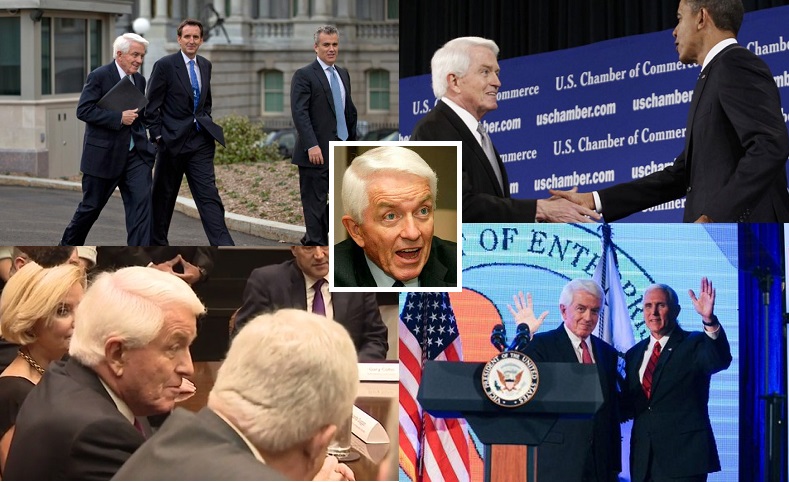 There is no easy solution for this problem, and ironically this core economic issue is where you find supporters of both Bernie Sanders and Donald Trump in alignment.
There is no easy solution for this problem, and ironically this core economic issue is where you find supporters of both Bernie Sanders and Donald Trump in alignment.
Where the Sanders and Trump camps split is on the solution. Team Sanders wants the government to play the role of economic referee (regulation), while Team Trump wants the government to change the rules of the economic game (countervailing duties, tariffs etc).
Before Donald Trump entered politics there was no home for people voting on the issue of a national economic agenda. Both Democrat and Republican candidates had essentially the same worldview on national economic policy because they are all getting money from the same multinational corporate trough. However, President Trump changed that dynamic by presenting an alternative national economic policy called America-First.
For decades middle America was begging the McConnell’s, Ryans, Boehners, Romney’s, McCain’s, Bushes, et al, to make America-Fist economic policies their priority. All of our shouts for help fell upon deaf political ears plugged by corporate donations and influence. Our communities were literally collapsing around us (see rust belt), and yet no national politician would do anything of consequence.
By the time Donald Trump arrived decades of frustration exploded in an eruption of massive applause because he was articulating the central economic issue that was being ignored by the professional political class. The America-First agenda is the restoration agenda. From Trump’s national economic policy, the middle-class erosion stopped. Economic security, specifically U.S. employment stability and wage rates, goes hand in glove with border security and immigration controls.
MAGAnomics is the core of the great MAGA republican coalition, a working-class coalition that cuts through all other distinctions and divisions. It is not republican because of political affiliation, it is “MAGA republican” only because the republican party was the political vehicle selected by Donald Trump to install the policy.
This reality creates a problem for the DC professional political class and the corporate media. Because MAGAnomics is the fundamentally binding principle there is no way to fracture the Trump supporter coalition.
I am a “MAGA republican” by default of my wanting a national economic agenda that looks out for the economic interests of American’s first.
Donald Trump is the irreplaceable Great MAGA King because Donald Trump is the only one who holds that same outlook.
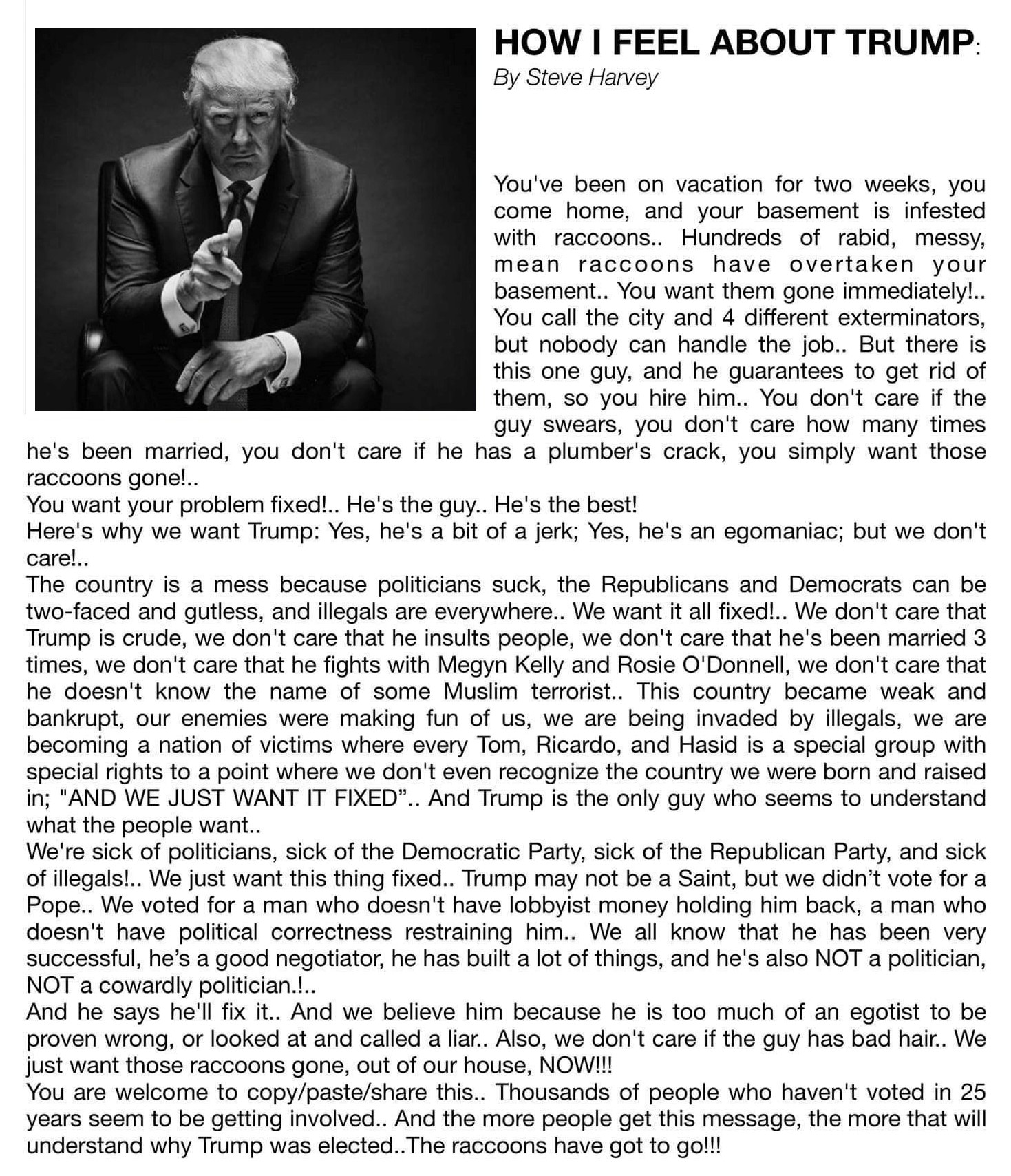
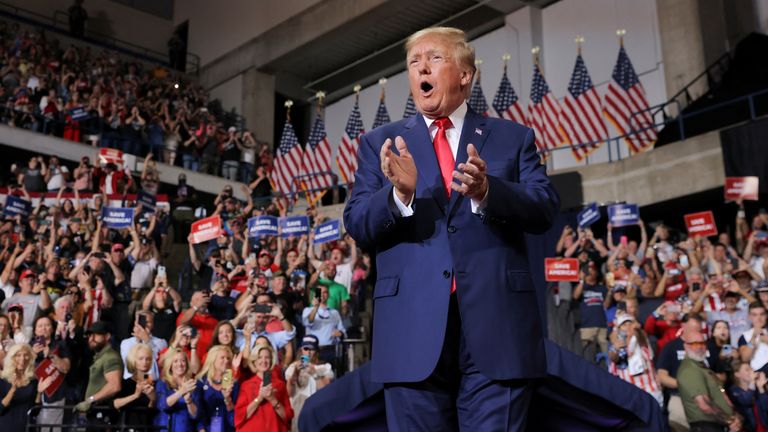




Post a Comment